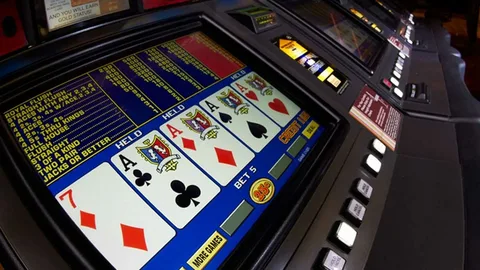The world of casino gaming, whether in a sprawling land-based resort or on a sleek online platform, is meticulously engineered. Beyond the dazzling lights and the promise of a big win, every element, from the sounds of a slot machine to the rules of a card game, is intentionally designed to captivate players and encourage sustained engagement. It’s a sophisticated blend of psychology, mathematics, and user experience design, all aimed at one primary goal: keeping you casinos not on GamStop playing.
Here’s an exploration of the key design principles that casinos employ to maximize player retention and engagement:
1. The Power of Variable Ratio Reinforcement
This is the bedrock of many casino games, especially slot machines. It’s a concept borrowed directly from behavioral psychology.
- Design Principle: Rewards (wins) are delivered after an unpredictable and varying number of responses (spins or bets). The player never knows exactly when the next win will come, nor how large it will be.
- How it Works: This creates a powerful addiction loop. The brain’s reward system releases dopamine in anticipation of an uncertain reward, driving a compulsive urge to continue the action. The unpredictability keeps hope alive, fueling the desire for “just one more spin.”
2. Near Misses: The Art of Almost Winning
Few things are as frustrating yet as motivating as coming tantalizingly close to a big win. Casinos leverage this human response masterfully.
- Design Principle: Games are programmed to frequently display “near misses”—outcomes where the player almost achieves a winning combination (e.g., two out of three jackpot symbols landing, the roulette ball stopping right next to your chosen number).
- How it Works: Research indicates that near misses activate the same neural reward pathways as actual wins, though to a lesser degree. This tricks the brain into perceiving an “almost win” as a positive signal, reinforcing the idea that success is just around the corner and encouraging continued play.
3. Losses Disguised as Wins (LDWs)
This is a particularly clever design technique that blurs the line between winning and losing.
- Design Principle: A “win” is celebrated with flashing lights, triumphant sounds, and often animated coin cascades, even if the payout is less than the initial bet. For example, if you bet $1 but only win $0.20, the machine will still put on a show.
- How it Works: By celebrating a net loss as if it were a victory, LDWs mask the fact that the player is losing money. The positive sensory feedback overrides the rational understanding of the financial outcome, making players feel like they’re “winning” more frequently than they actually are.
4. The Illusion of Control
Humans naturally desire a sense of agency, even in situations governed by pure chance. Casino games are designed to tap into this cognitive bias.
- Design Principle: Players are given minor, non-influential actions within the game. This can include pressing a button in a specific rhythm on a slot machine, blowing on dice before a craps roll, or having “decisions” in bonus rounds that are actually pre-determined.
- How it Works: These small acts of perceived control make players feel more invested in the outcome and believe that their actions might influence luck. This fosters an overestimation of their actual ability to impact results, leading to extended play.
5. Environmental and Sensory Design: The “Casino Effect”
Land-based casinos are master architects of atmosphere, while online platforms mimic these cues digitally.
- Design Principle:
- Absence of Time Cues: Land-based casinos famously lack clocks and windows, making it easy for players to lose track of time.
- Constant Stimulation: A pervasive soundtrack of winning jingles, upbeat music, and flashing lights creates a high-energy, exciting environment that constantly reinforces the idea of success.
- Comfort and Convenience: Free drinks, comfortable seating, readily available ATMs, and seamless TITO (Ticket-In, Ticket-Out) systems are designed to remove any reason for players to leave the gaming floor.
- How it Works: This immersive, stimulating environment disorients players, distracts them from external concerns, and encourages continuous focus on the game at hand, often leading to longer sessions than intended.
6. Mathematical Design: The Unseen Engine (RTP & House Edge)
Beneath all the psychological triggers, the core mathematical design ensures long-term profitability.
- Design Principle: Every game is mathematically designed with a “Return to Player” (RTP) percentage (for players) or a “House Edge” (for the casino). The RTP is always less than 100% (and the house edge is always greater than 0%).
- How it Works: While individual outcomes are random, the game’s programming ensures that over millions of plays, the casino will retain a predictable percentage of all money wagered. The faster the game plays, the more bets are placed, and the more quickly the house edge can take effect.
7. Gamification and Loyalty Programs
Modern casino design increasingly incorporates elements from video games to enhance engagement.
- Design Principle: Players earn points, unlock levels, achieve badges, and receive personalized rewards as they play. Loyalty programs offer comps, free spins, and bonuses to encourage return visits and continued wagering.
- How it Works: These systems tap into the human desire for achievement and progression. They provide tangible (though often low-value) rewards that reinforce the act of playing, fostering a sense of accomplishment and encouraging players to keep spending to unlock the next tier or bonus.
Conclusion: Playing with Awareness
Casino games are sophisticated products of design, expertly engineered to be highly engaging and encourage extended play. Understanding the psychological principles and mathematical underpinnings behind these designs is crucial for any player. It’s not about being immune to their allure, but about developing an informed awareness. This allows players to approach gambling as a form of entertainment, set responsible limits, and recognize when the design is nudging them to play beyond their intentions, ultimately leading to a more controlled and enjoyable experience.
